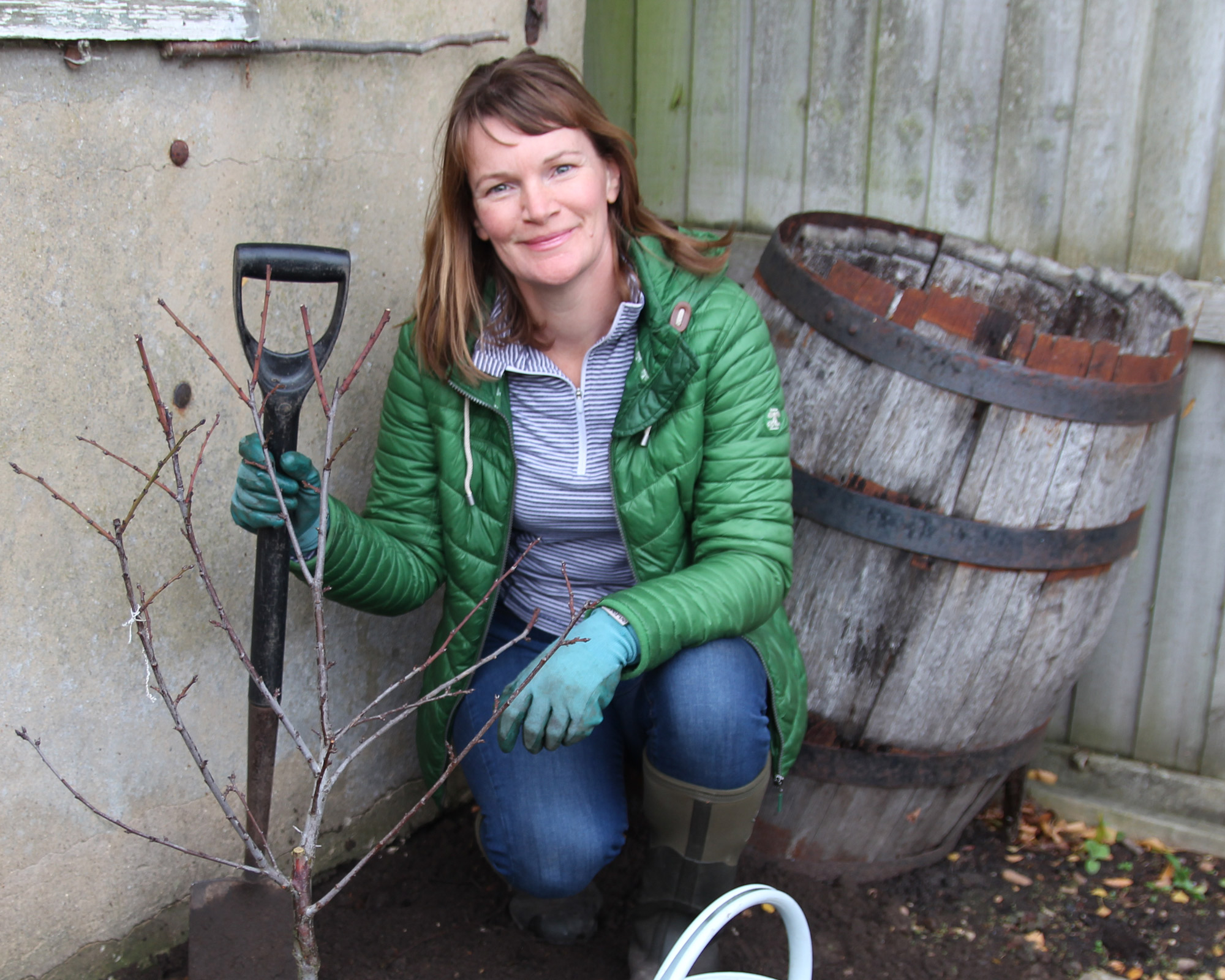How to grow sweet corn – a guide to planting corn on the cob
Cultivate a sunshine harvest of mouth-watering cobs by following our golden rules on how to grow sweet corn
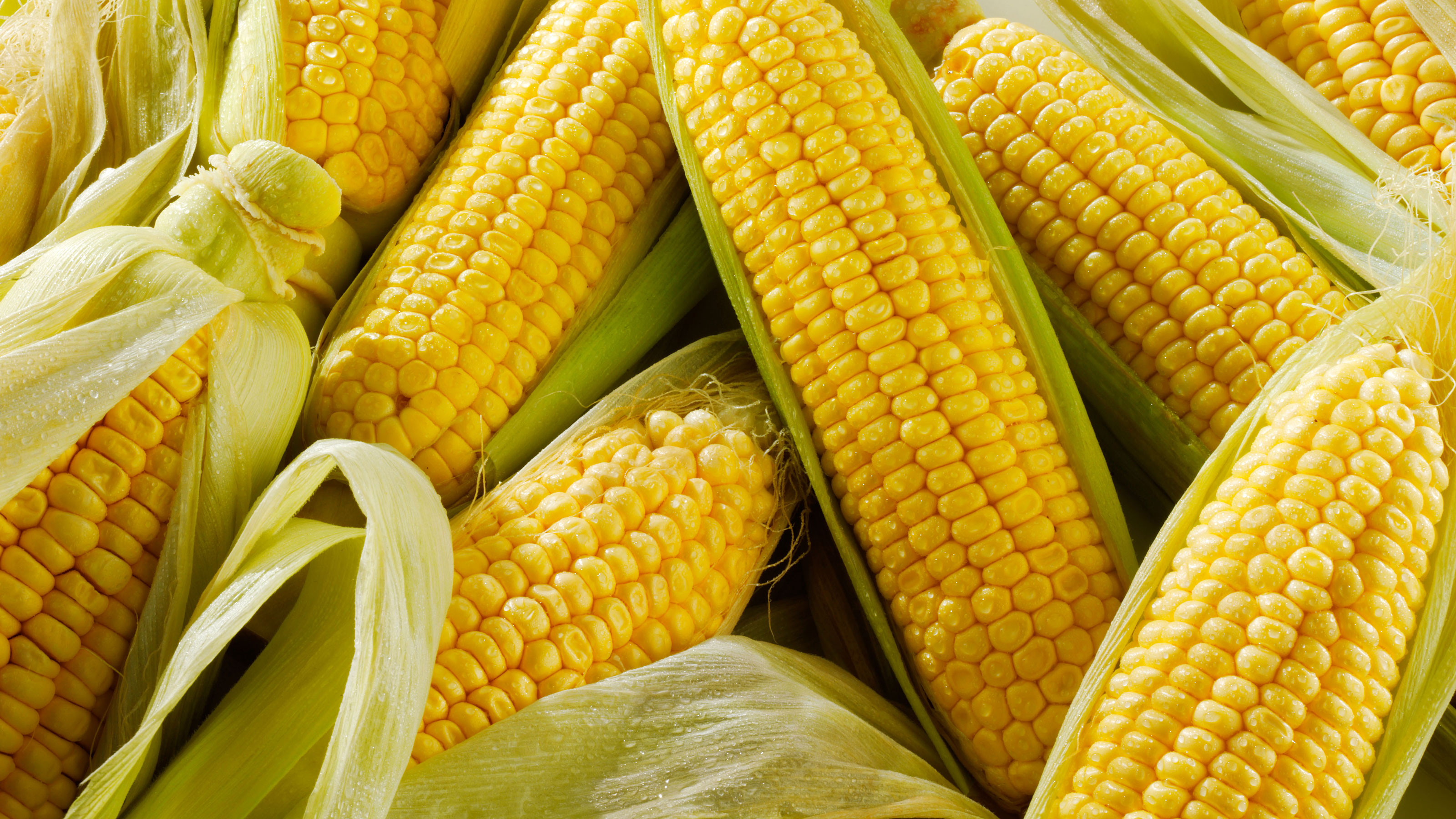
Figuring out how to grow sweet corn is not as complicated as you might think. Master the basics of sowing, planting and nurturing these towering treats, and you’ll wonder why you didn’t try sooner. Once you’re peeling back your own creamy homegrown cobs, you will be addicted to growing more.
Sweet corn has a reputation for being tricky to grow, but it's really an easygoing (and easy-growing) plant. It really comes down to understanding what the plants need to flourish: space, sunshine, pollination… and patience! Give these plants some room and time to reach their full potential, and you’ll be amazed at the results.
Many sweet corn varieties have been bred specifically for certain regions or climates, so just keep this in mind as you mull over your options. Pick a variety that suits your area and ground conditions, and you too will soon enjoy the sweet taste of success!
Need ideas for plants to grow with your sweet corn? Our grow your own fruit and veg guides will show you how to plant a variety of easygoing crops.
Which sweet corn is best for your garden?

Before you find out how to grow sweet corn, there are a few things to consider. Sweet corn is actually a massive grass. Being a grass, sweet corn is predominantly wind-pollinated.
The male flower (called the ‘tassel’) has to deposit its pollen on all the female pistils (the ‘silk’) so the kernels swell successfully. If that doesn’t happen, there might be gaps in the resulting cobs.
Corn on the cob grows best in long, hot summers. That said, several varieties are happy in cooler climates. If this applies to you, try a hybrid and start undercover. In colder regions, ‘early’ kinds do well. Gardeners in the north should pick an early-maturing F1 hybrid (‘Swift’, ‘Sundance’ or ‘Northern Extra Sweet’) for a better crop.
If you want especially sweet cobs, look for a variety with ‘sweet’ or ‘sugar’ in the name. Supersweet types are sweeter, and retain sweetness for longer. However, if you grow another variety nearby, this can affect the flavour due to cross-pollination.
Popping varieties such as baby ‘Minipop’ are a fun option. These little cobs grow to about 4in (10cm) in length and are excellent in stir fries.
For more inspiration on versatile veg that are easy to cook, see our guide on how to grow courgettes.
When to grow sweet corn
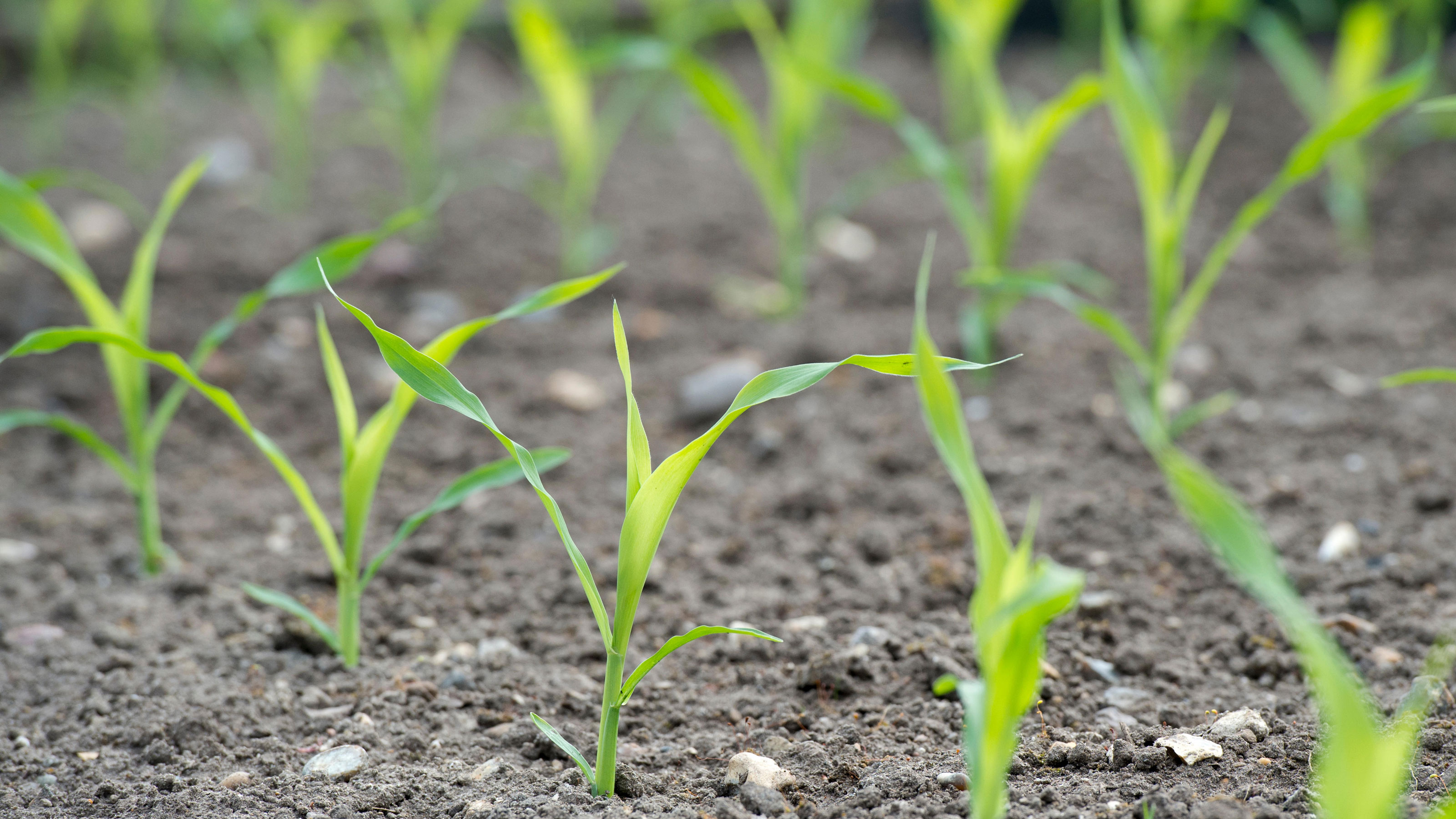
Want to stretch out your sweet corn harvests as much as possible? Sow a combination of early, mid and late varieties (such as ‘Swift’, ‘Incredible’ and ‘Conqueror’) during late April and early May. If sown indoors, they are ready for planting out in June.
Alternatively, when learning how to grow sweet corn, you could try making staggered sowings of one variety at three-week intervals. You can sow as late as June if you wish, depending on the variety. This will mean you can enjoy sweet and crunchy corn on the cob from August until October.
How to grow sweet corn
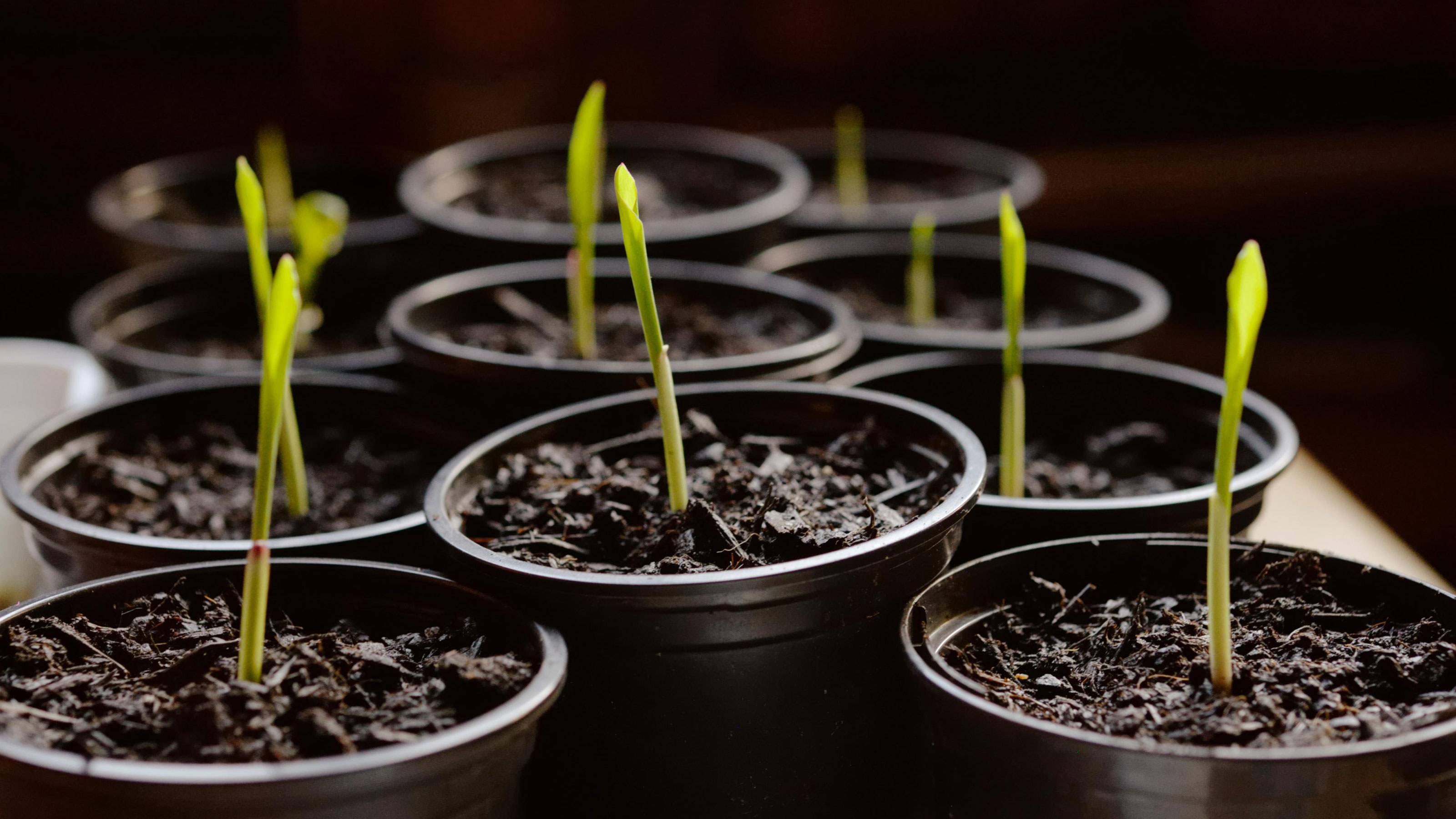
Now you are ready to work through how to grow sweet corn. Remember that sweet corn loves the warmth and will not tolerate frost. Make sure you prep accordingly for successful germination.
Seeds may be sown directly outside once the soil has warmed up, but the safest way to sow is into pots under glass. This gives you a head start on outdoor-sown corn and allows you to extend the growing season further.
One sweet corn plant will give at least one cob, and often two. For this reason, it’s best to sow at least 20 plants for a decent harvest.
1. Sow your sweet corn seeds indoors

It’s good to think ahead when planning how to grow sweet corn. Sweet corn plants develop an extensive root system. Buy some time by using 3.5in (9cm) pots or the largest modules you can find. Fill with good-quality multi-purpose and water well.
Sow one seed per pot, 1.5in (4cm) deep. Water in lightly. Place in a propagator set at 18-20°C (64-68°F). Depending on the variety, seedlings should appear in five-10 days. Keep the compost just moist.
Once germinated, remove the seedlings from the propagator. Grow on at 15-18°C (59-64°F). Again, keep the compost moist. If sown in late April or early May, they should be ready for planting out in June.
Harden off plants as planting time approaches. Leave the plants out for longer spells for around a week. For more help with hardening off seedlings, follow this guide.
2. Start some sweet corn off outside

Wait until the ground is warm before sowing outdoors. You can cover the ground with cloches to accelerate this process, or lay some black plastic on the ground to trap warmth. Do this two weeks before sowing outside.
When the soil temperature is above 10°C (50°F), sow directly into the soil. You should be able to do this from mid-May. Drop two seeds in a hole 1in (2.5cm) deep. Repeat to create a block, with each sowing 18in (45cm) apart.
If both seeds in each sowing germinate, you can thin out to leave the strongest seedling. Do this when they are about 8in (20cm) tall.
3. Plant out your sweet corn
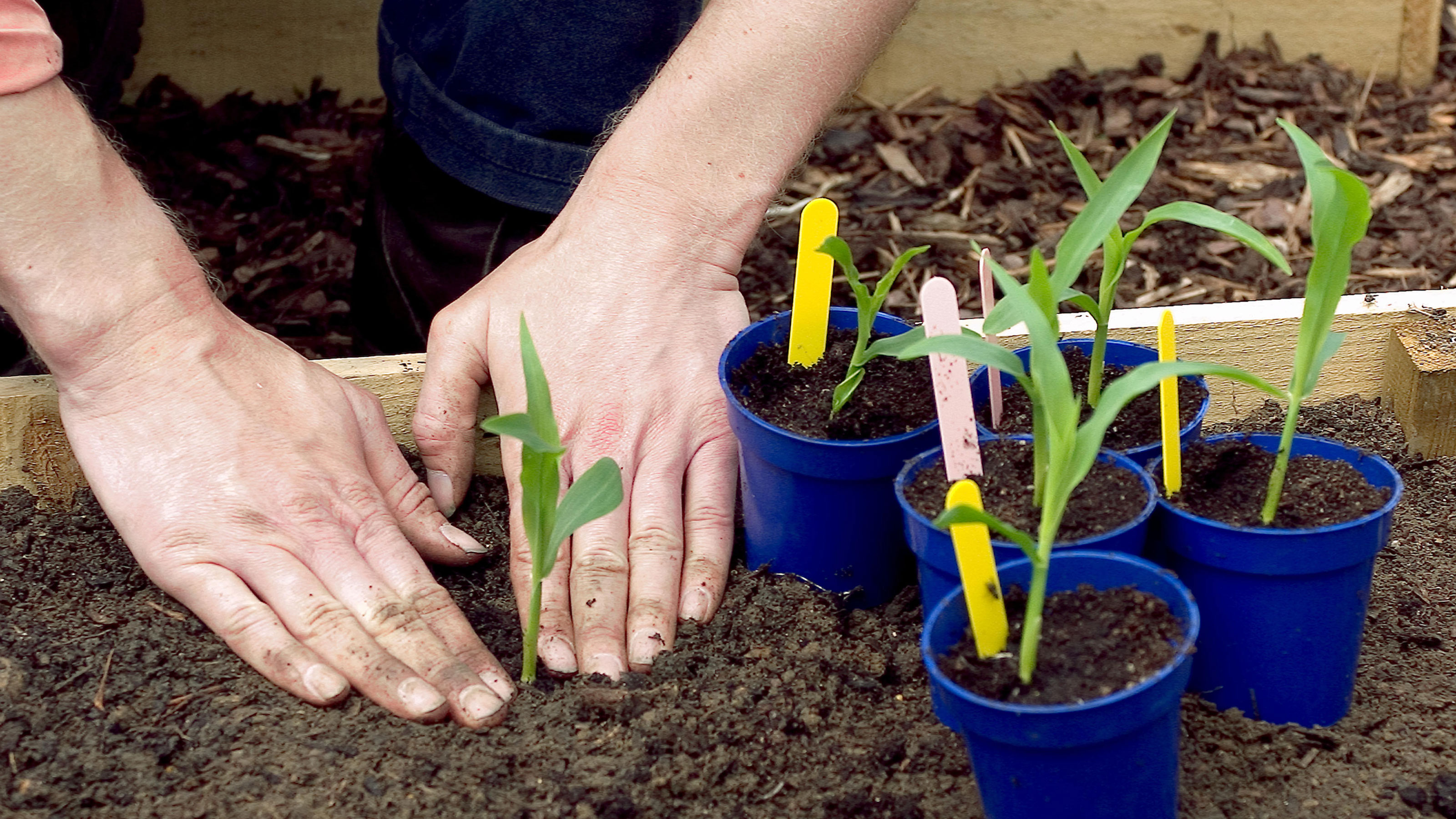
When learning how to grow sweet corn, the first rule of planting is warmth. Make sure the soil is warm, 13°C (55°F) or higher. Supersweet varieties need soil around 18°C (65°F) or higher.
It’s a good idea to prep the soil by digging over thoroughly, adding a well rotted compost. It’s also wise to water seedlings before planting out.
As a general rule, you can plant out the sweet corn seedlings once they are 8-12in (20-30cm) tall. If they are in biodegradable pots, you can plant these straight into the ground. Otherwise, remove the pots.
Discover how to transplant seedlings in our step-by-step guide.
Make a hole 2in (5cm) deeper than the pot. Add some multi-purpose to the bottom of the hole, then insert the seedling. Feed the roots to the bottom, then firm the soil back in and water in well.
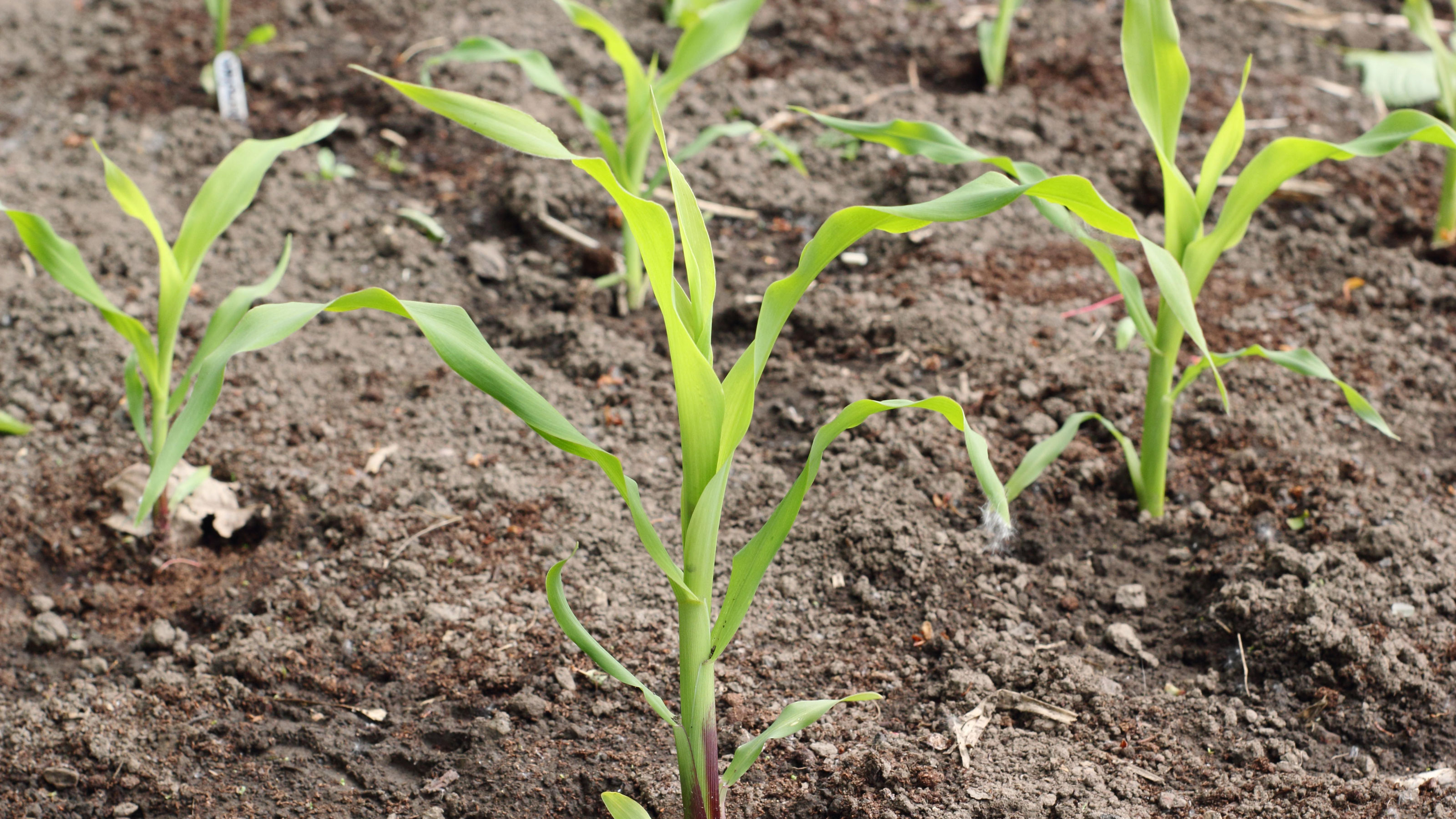
Plant in blocks so neighbouring sweet corn can pollinate each other. Space plants 14-18in (35-45cm) apart each way (this can be less for dwarf varieties). Try to keep the block as square as space permits.
Sweet corn needs a lot of nitrogen for growth. Sprinkle a little fish blood and bone around each plant to help them get off to the right start.
4. Use plastic bottles as homemade cloches
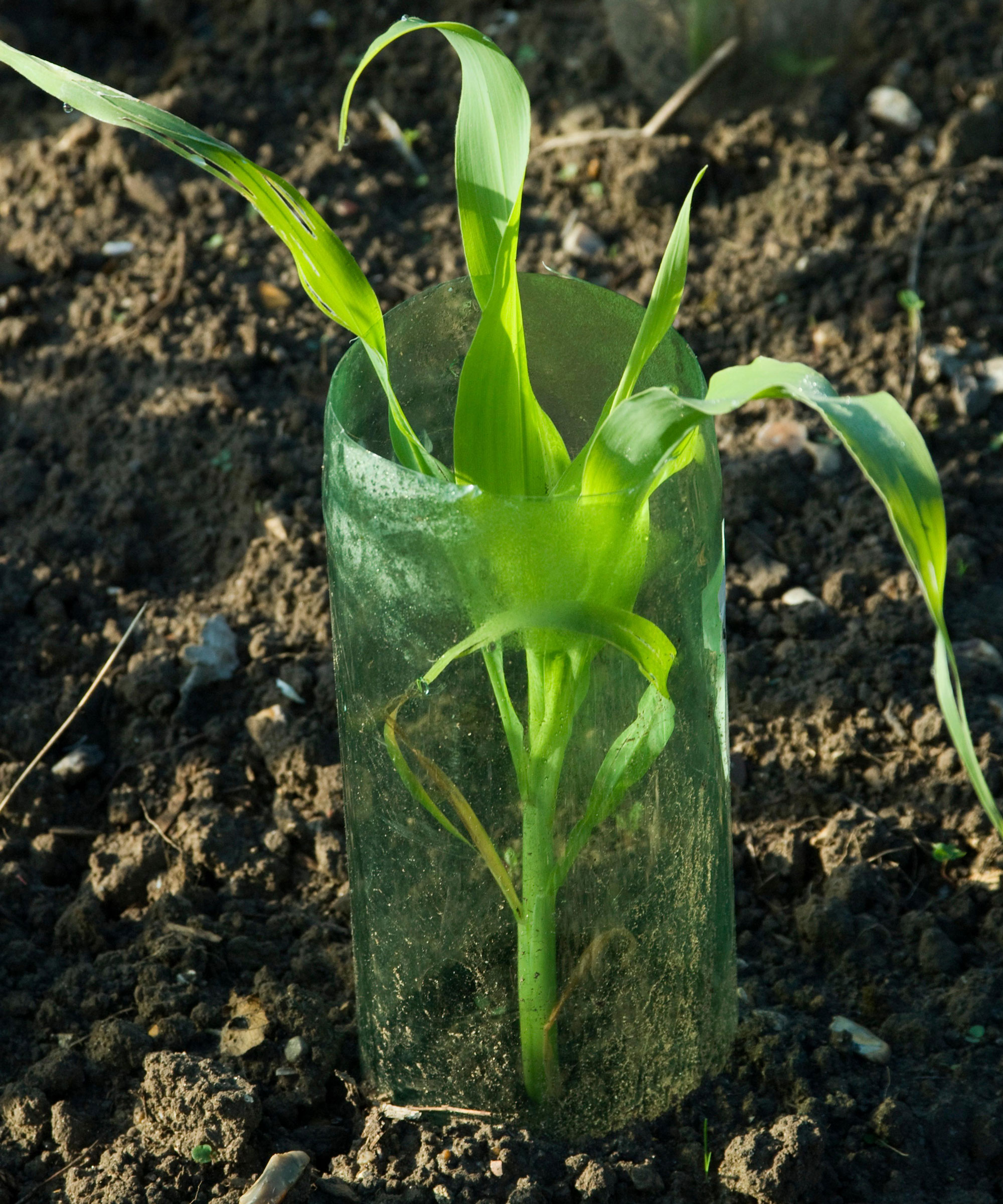
Sweet corn is a wind-hating crop. If your vegetable patch might be a little exposed, extra help is needed when the plants are younger. For this, you just need some empty small plastic drinks bottles.
Cut off the tops and bottoms to create uniform tubes. These will support the younger plants and encourage them to grow upright. They also allow for ample ventilation so the plants won’t wilt or get stifled.
Where to grow sweet corn

Knowing how to grow sweet corn in the right place can be summed in one word: sunshine! These plants are sun-lovers. Yes, certain varieties are fine in partial shade (like ‘Earlibird’ and ‘Sparrow’), but sweet corn is happiest in the sun.
You should also pick a relatively sheltered spot and free draining soil. Make sure the ground is fertile and has been enriched with well-rotted organic matter or lots of garden compost (you can find out how to compost in our guide). Sweet corn plants will struggle on dry or heavy soils.
And remember, your corn on the cob needs ample space to grow and reach its full potential. Since these plants rely on wind pollination, the grouping is important. You need to be able to plant in blocks to ensure good pollination and well-filled cobs.
How to care for sweet corn

As you learn how to grow sweet corn, you will find that they are not very demanding plants to maintain. Just water well so they develop a strong root system.
- Water more in dry weather, as silks grow and cobs appear.
- Sweet corn relies on nitrogen for its cob development, so add a general-purpose liquid feed, tomato plant feed or homemade comfrey feed. Do this in June and at two-week intervals until harvesting.
- Add a mulch of grass clippings or garden compost so plants hold on to as much moisture as possible. This will also help to prevent weeds. You should also weed regularly while taking care not to disturb the roots. Find out more about mulching in our guide.
- When the plants get to about 25in (60-65cm) tall, draw soil up around the bases of the stems. This will provide the plants with support and leads to stronger roots.
- To give pollination a helping hand, you can also lightly tap the tops of the plants when you see the tassels open. This assists with pollinating the silks. For other ways to boost pollination, see this guide to the top bee friendly plants you can grow.
What to plant with sweet corn
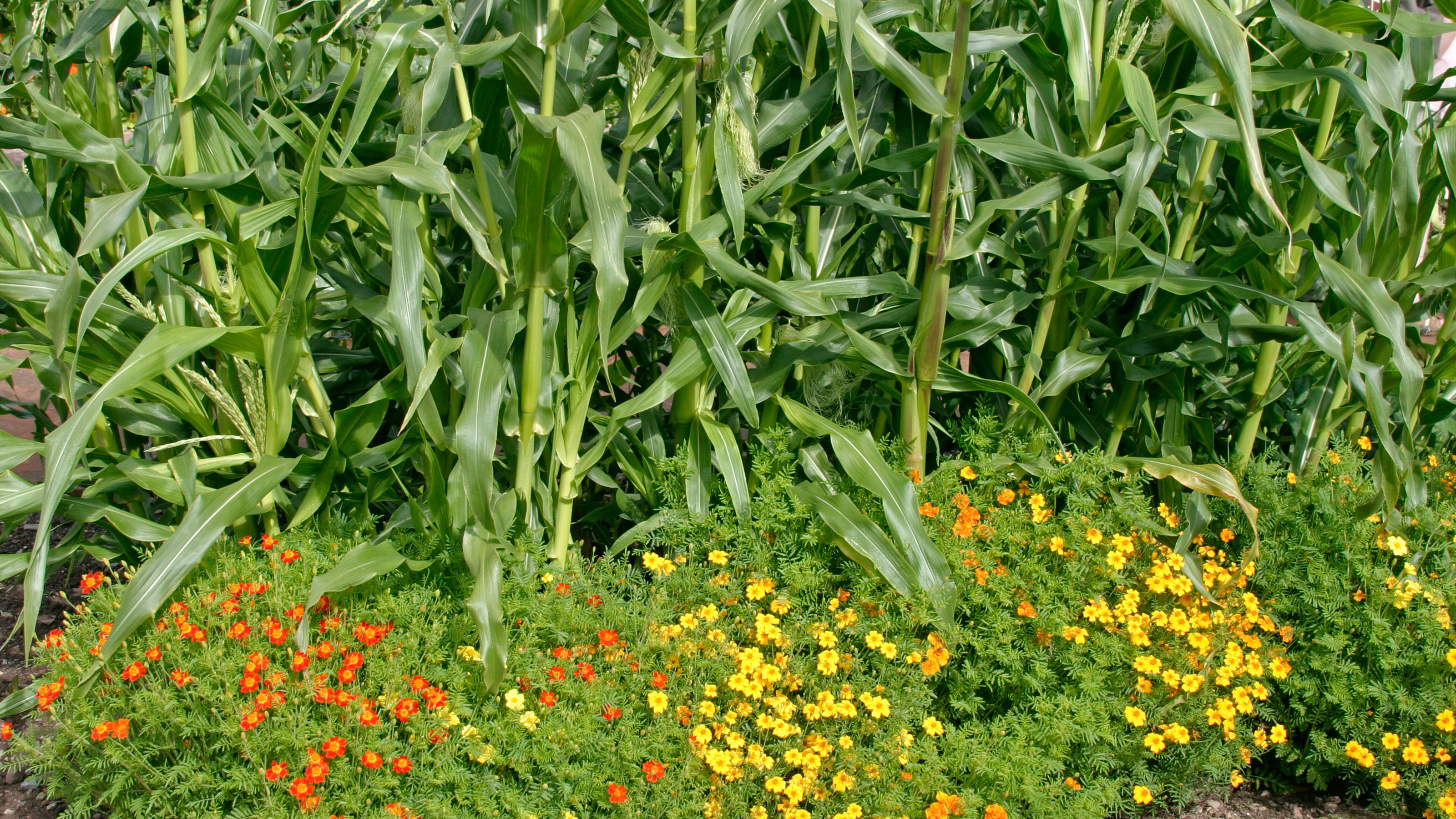
Another trick in knowing how to grow sweet corn successfully is to choose the right plants to grow alongside it.
The right plant partnerships - known as ‘companion planting’ - can help to fight off pests and attract beneficial insects. They can also help to nourish the soil around your sweet corn and to suppress weeds.
Tagetes (French marigolds) are great plant partners. They repel a wide variety of pests, including whitefly and aphids (and they also add a lovely splash of colour to the plot).
Nasturtiums also keep pests from your corn – by attracting aphids to them instead. Plant these a few feet from your corn. Grow dill as well to attract beneficial insects like parasitic wasps.
Some squash or melons will help to prevent weeds. They also act like a mulch, helping to lock in moisture under ground. Growing beans nearby can also help. They boost nitrogen levels in the soil, which corn on the cob needs to flourish.
Read our guide to companion planting to find out more about growing the right plants together for better crops.
How to deal with sweet corn problems
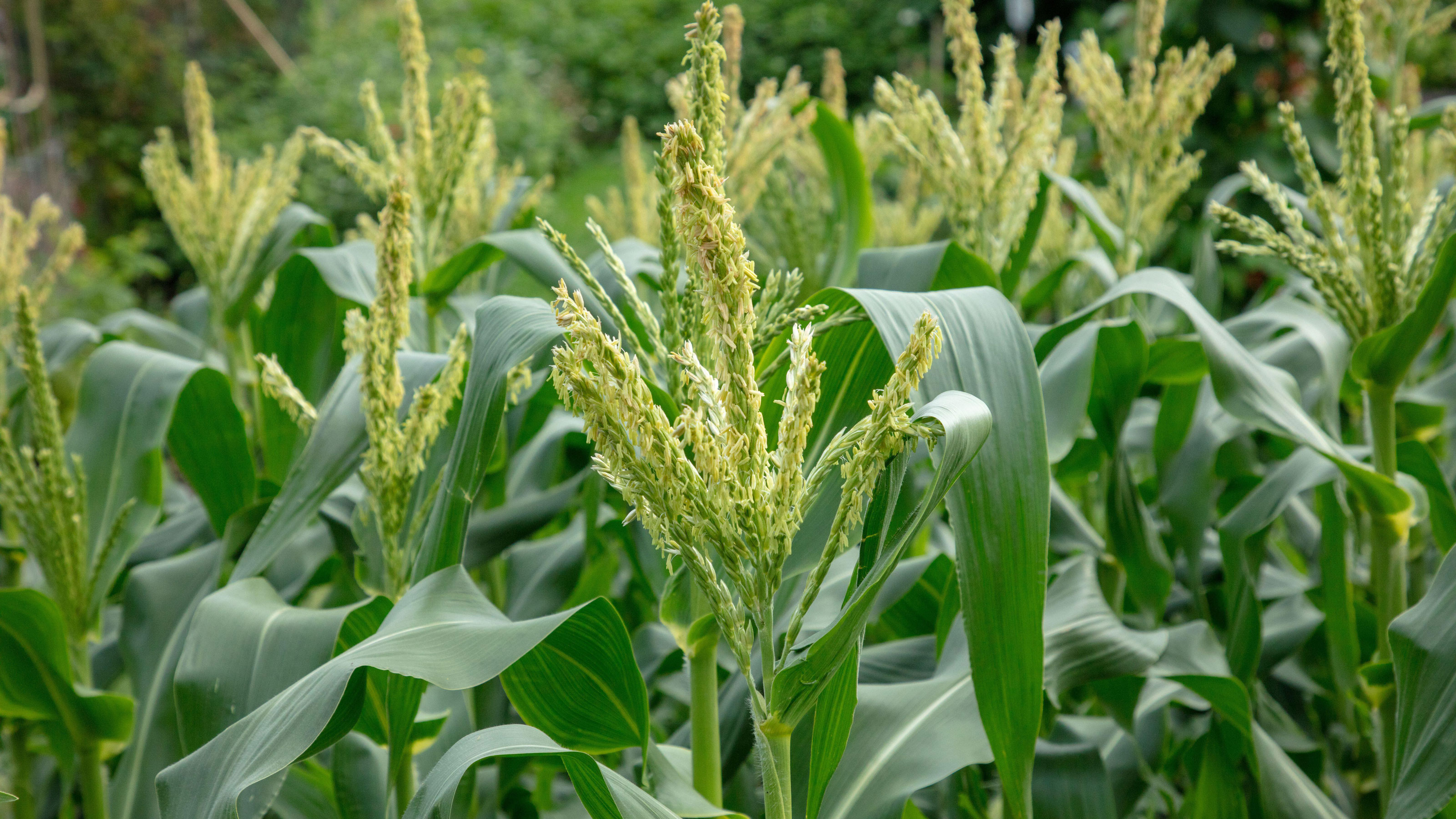
Once you have figured out how to grow sweet corn and the seedlings are established, they are some of the most easygoing plants to grow in the garden.
You may notice the lower leaves of sweetcorn turn yellow and die off. If most of the leaves are green, don't worry. However, if the top of the leaves are yellow, this could be a nitrogen deficiency. Add some nitrogen-rich liquid feed to put things right.
Probably the biggest worry is slugs and snails, which are drawn to young corn plants; you’ll be able to see the trails on the soil around the crop, and also on the leaves. They can demolish a group of plants in less than a week if left unchecked.
Control this problem with ‘slug pubs’ (plastic cups or dishes half-filled with beer), eggshell barriers, copper tape and other organic measures. To find out how to get rid of slugs, read our guide.
If your crops have no tassels, chances are you forgot to water the plants at a key time. Make sure you water frequently. Mulching around the plants with organic matter will also help to regulate the water intake so the roots are kept nourished.
Picking sweet corn

Knowing the best way to harvest corn on the cob is a skill in itself. The beauty of homegrown corn on the cob is its greatly improved sweetness – but make sure you eat it at its best.
Check for ripeness once the tassels are dark brown, usually at the six-week mark. Once the corn is ready, twist the cob and pull quickly from the stem. Eat straight away to ensure the best freshness and sugar levels. This is key: the sugars start turning to starch as soon as it is picked.
Get that pan of boiling water ready before picking so you don’t lose a precious second of sweetness!
Five sweet corn varieties to try
Ready to try your hand at how to grow sweet corn? Guarantee a super-long, super-sweet harvest with these lip-smacking corn on the cob varieties:
1. Conqueror sweet corn
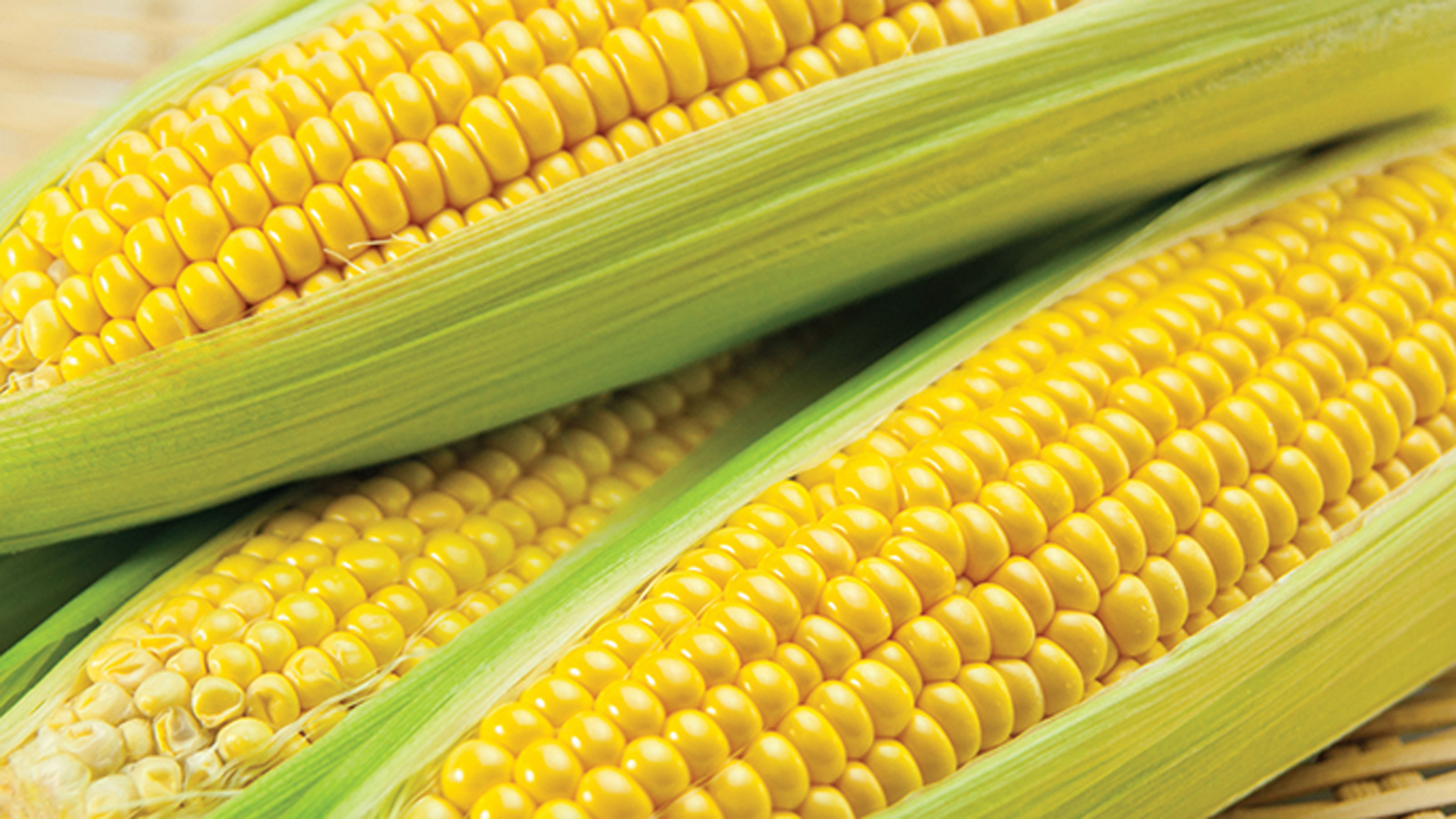
Maturing slightly later in the season, this variety is ideal for extending the fresh harvest period if grown with an early type. An RHS AGM winner in 2009. Tall, vigorous plants produce long cobs. A well-established supersweet variety.
2. Earlibird sweet corn
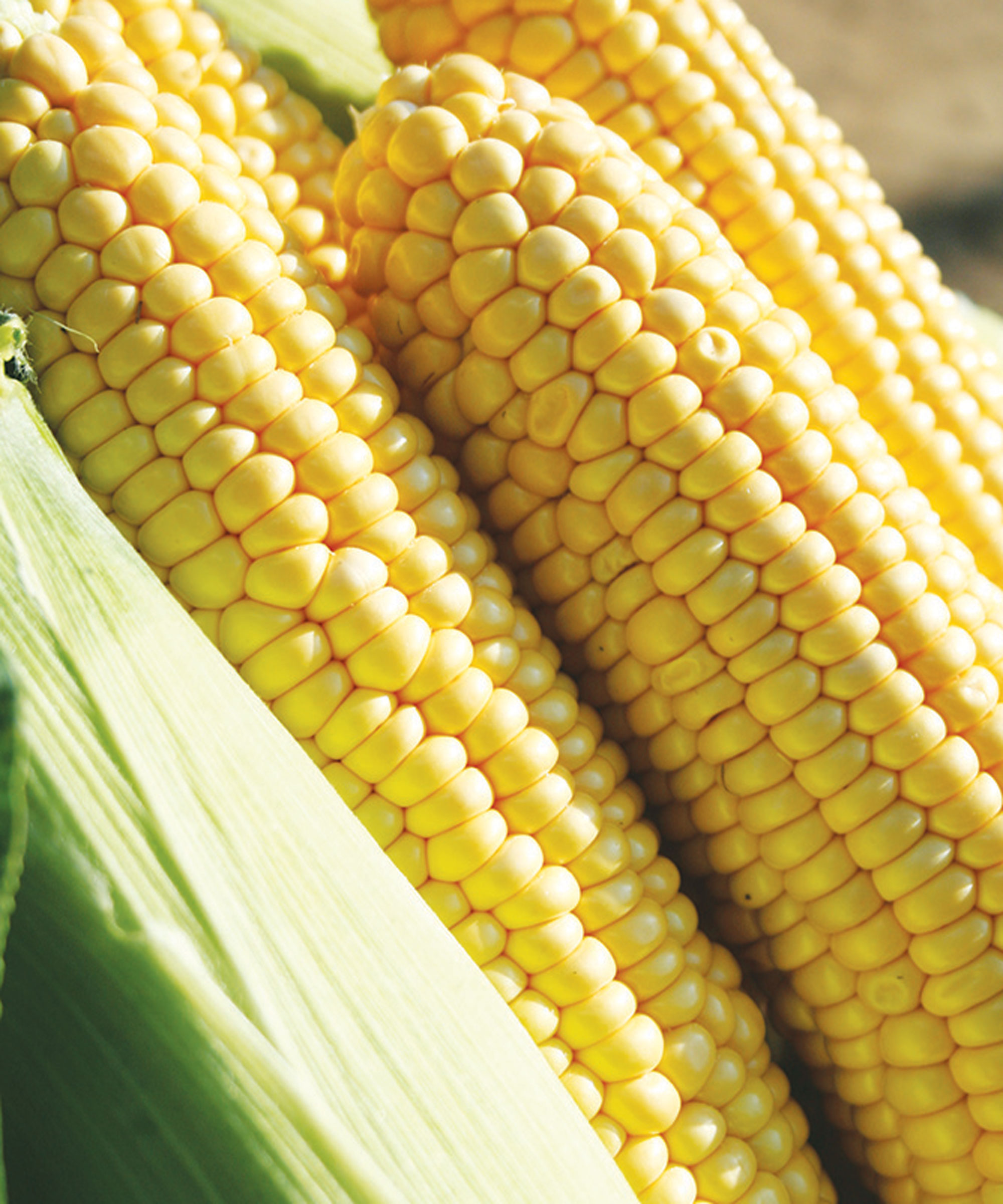
This supersweet variety was given an RHS AGM in 2003. It’s one of the earliest supersweets to mature. Cobs are at least 8in (20cm) in length, and occasionally plants produce three mature cobs each.
3. Lark sweet corn

An early, extra tendersweet variety with thin tender skins and lots of sweet flavour. High yielding with cobs produced mid-season. Tolerates cooler growing conditions. Restrict plants to two cobs and expect a well-filled cob about 8in (20cm) long.
4. Sparrow sweet corn
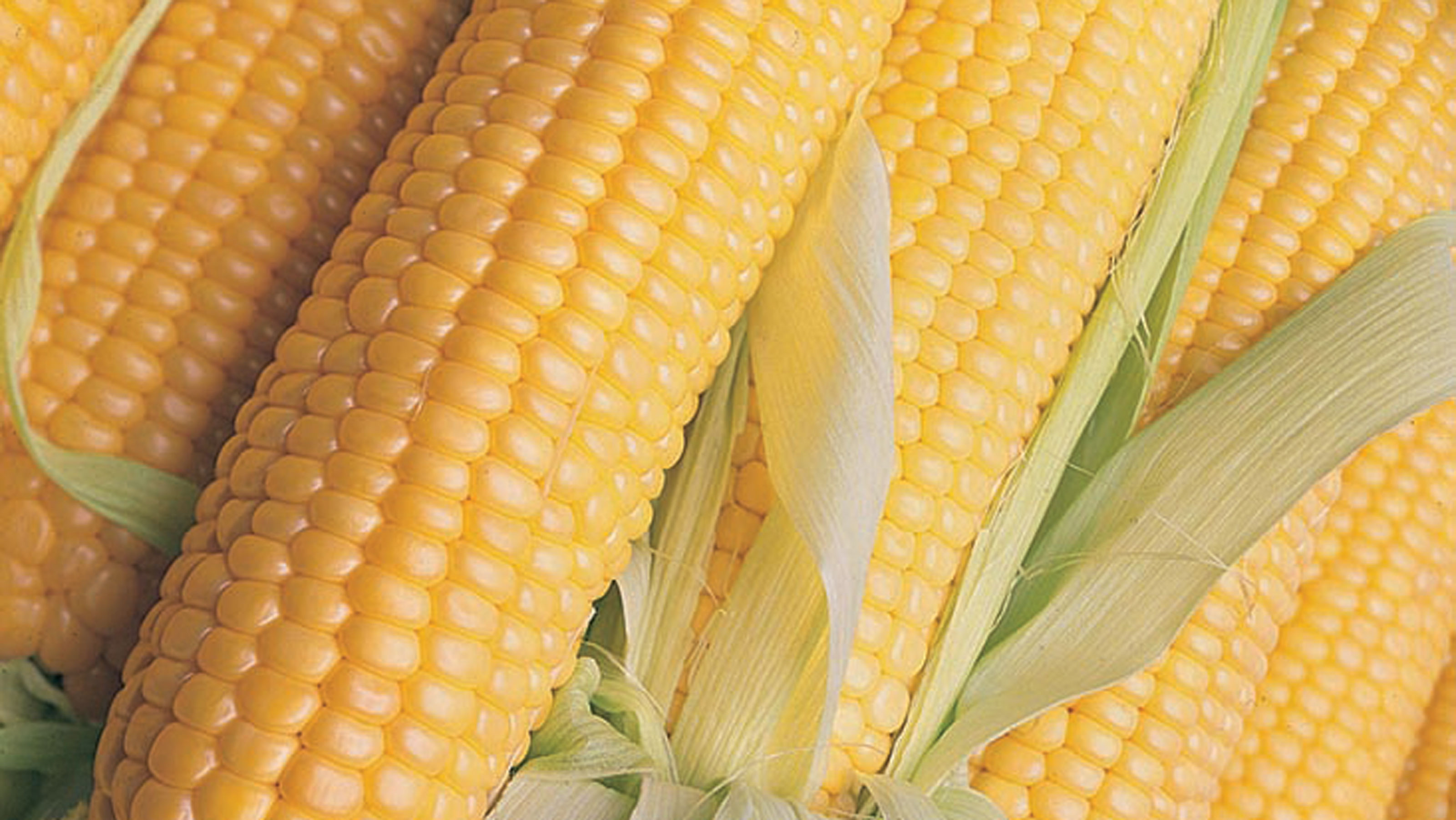
An excellent mid-season, extra-tender AGM sweetcorn, awarded in 2009. Often gives two cobs per plant. Shorter plants, so it's ideal for more exposed sites. Individual kernels are slightly larger than normal. Average length of cobs is 9in (23cm).
5. Swift sweet corn
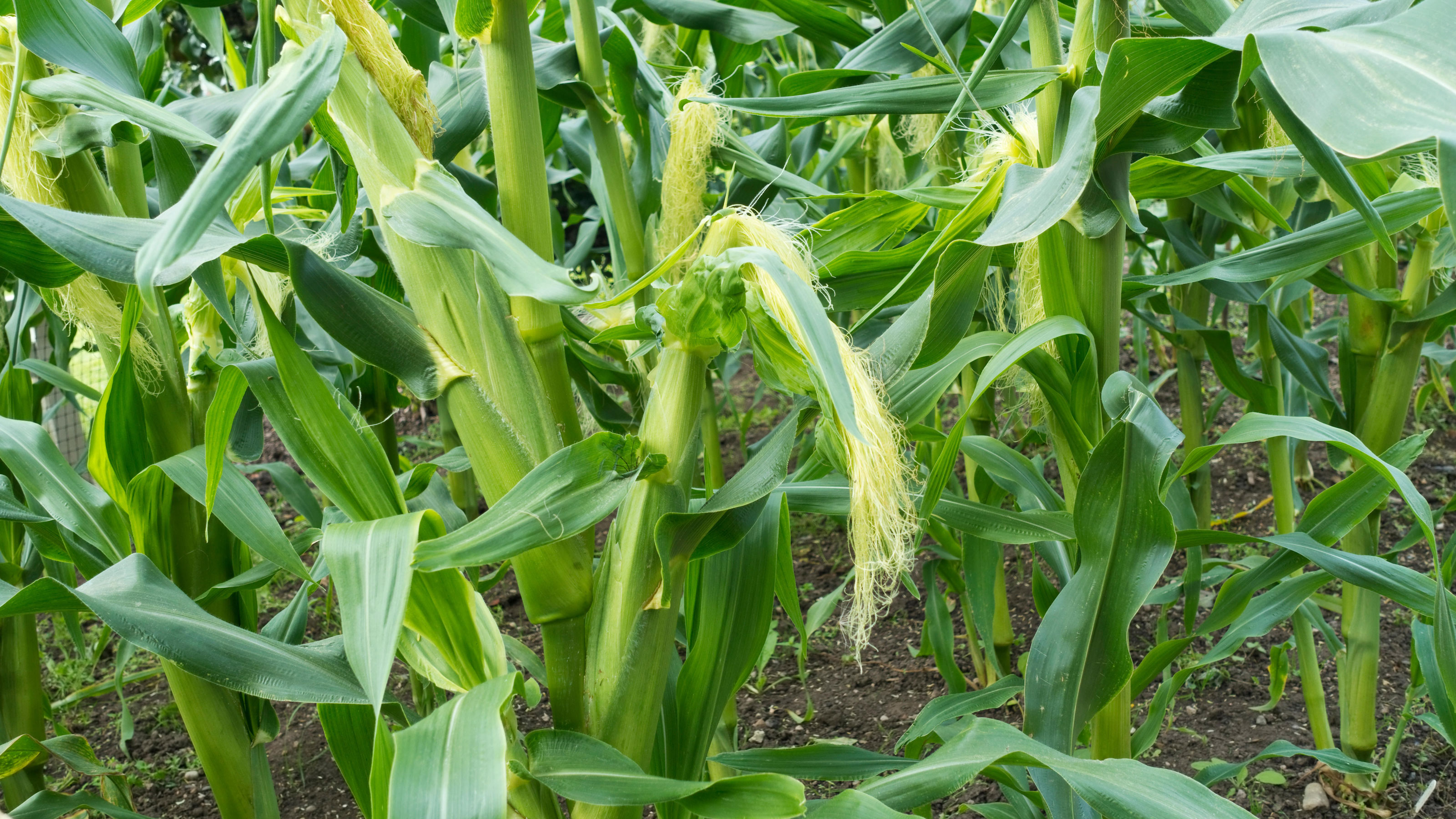
Popular, reliable, extra tender-sweet type. Plenty of cobs, which are about 9in (22cm) long and well filled with straight rows of corn. Well suited to the UK climate. Slightly shorter than average, so withstands windy conditions well. Another AGM winner.
Where to buy sweet corn seeds
Sweet corn seeds are readily available from a wide range of suppliers. Use our quicklinks below to head straight to leading suppliers, and try some of our recommendations on how to grow sweet corn for yourself.
Where to buy sweet corn seeds and plugs UK
- Shop sweet corn at Amazon
- Shop sweet corn at Dobies
- Shop sweet corn at Kings Seeds
- Shop sweet corn at Mr Fothergill's
- Shop sweet corn at Suttons
- Shop sweet corn at Thompson & Morgan
- Shop sweet corn at Waitrose Garden
- Shop sweet corn at You Garden
Where to buy sweet corn seeds and plugs US
- Shop sweet corn at Amazon
- Shop sweet corn at Burpee
- Shop sweet corn at Home Depot
- Shop sweet corn at Walmart
Can I save seeds from the sweet corn I grow?

Already tried how to grow sweet corn and want to make use of the seeds? You can save seeds if your corn is an open-pollinated (or ‘heirloom’) variety. These have been bred to reduce the risks of negative traits. However, hybrid (F1) seeds will not breed true in the second year (ie they won’t yield the same plants as the parent). So check the pack to see if it says ‘OP’ (open-pollinated) or F1 (hybrid).
Want to try other colorful veg plants with your sweet corn? Find out how to grow beetroot with our expert tips.
If you do save sweet corn seed, leave the ‘seed’ corn on the plant for a month or so longer than the rest of the crop, and air-dry after harvest. Save the best seed from the plants with strong stalks, full cobs and ideally disease resistance. After drying, store the seed in an airtight container in a cool, dark spot. Don’t forget to label it!
With all that info, we think you'll be more than prepped on how to grow sweet corn, and enjoy a great harvest year after year.
Lucy studied horticulture at Writtle and Wye colleges, before going on to be a Horticultural Advisor at RHS Wisley for 6 years. Lucy has been Head Gardener on a 100-acre private Essex estate for the past 7 years, but she still writes regularly for titles such as The Garden, Gardeners’ World, The Guardian and Amateur Gardening. Lucy has also contributed to various RHS books, being sole author of the RHS Step by Step Veg Patch.


